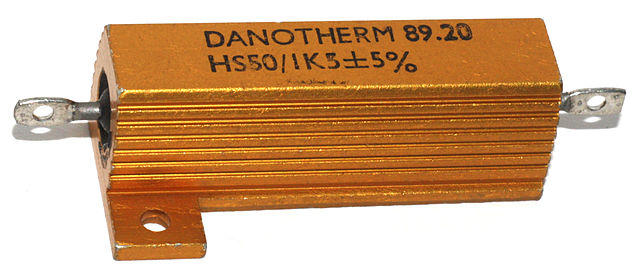A potentiometer is a three-terminal resistor with a sliding or rotating contact that forms an adjustable voltage divider. If only two terminals are used, one end and the wiper, it acts as a variable resistor or rheostat.
A typical single-turn potentiometer
Single-turn potentiometer with metal casing removed to expose wiper contacts and resistive track
PCB mount trimmer potentiometers, or "trimpots", intended for infrequent adjustment
Size scaled 10k and 100k pots that combine traditional mountings and knob shafts with newer and smaller electrical assemblies. The "B" designates a linear (USA/Asian style) taper.
A resistor is a passive two-terminal electrical component that implements electrical resistance as a circuit element. In electronic circuits, resistors are used to reduce current flow, adjust signal levels, to divide voltages, bias active elements, and terminate transmission lines, among other uses. High-power resistors that can dissipate many watts of electrical power as heat may be used as part of motor controls, in power distribution systems, or as test loads for generators.
Fixed resistors have resistances that only change slightly with temperature, time or operating voltage. Variable resistors can be used to adjust circuit elements, or as sensing devices for heat, light, humidity, force, or chemical activity.
Various resistor types of different shapes and sizes
An aluminium-encased power resistor rated for dissipation of 50 W when mounted on a heat-sink
VZR power resistor 1.5 kΩ 12 W, manufactured in 1963 in the Soviet Union
Axial resistors with wire leads for through-hole mounting








